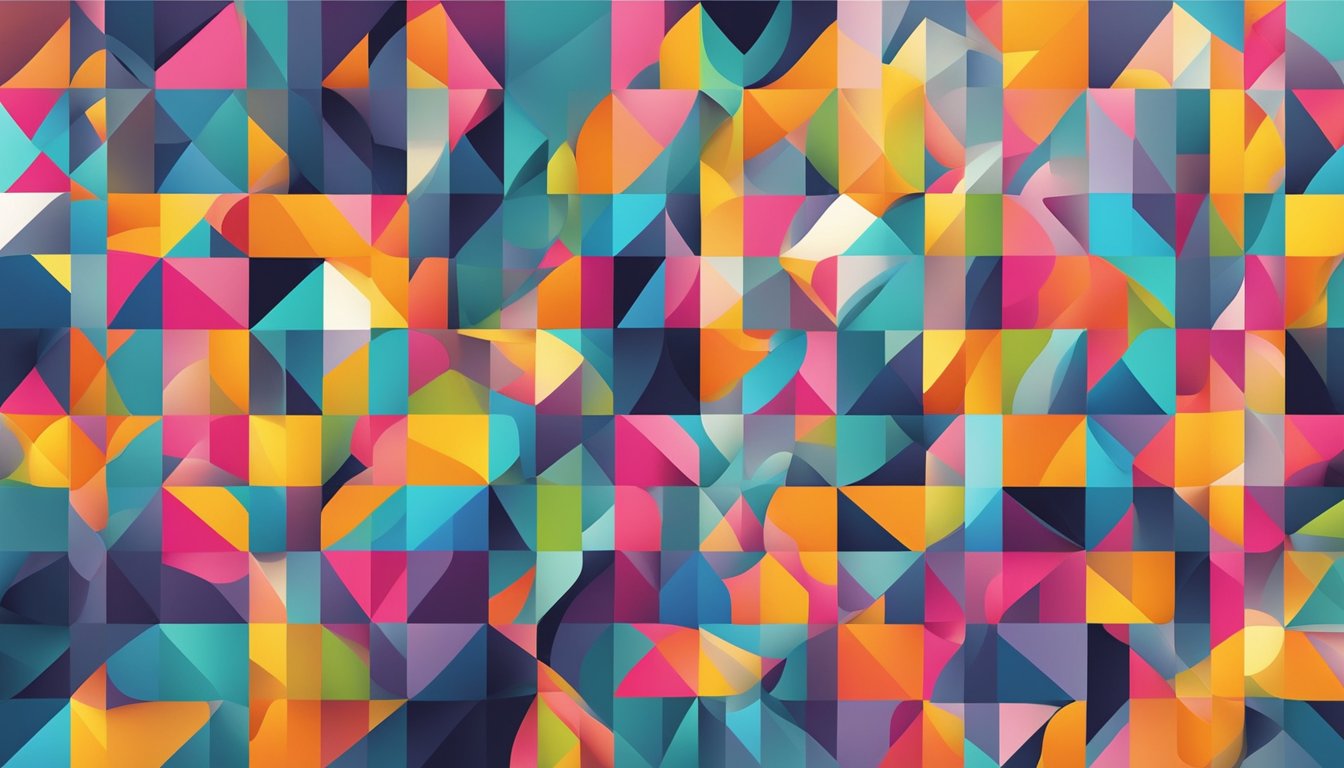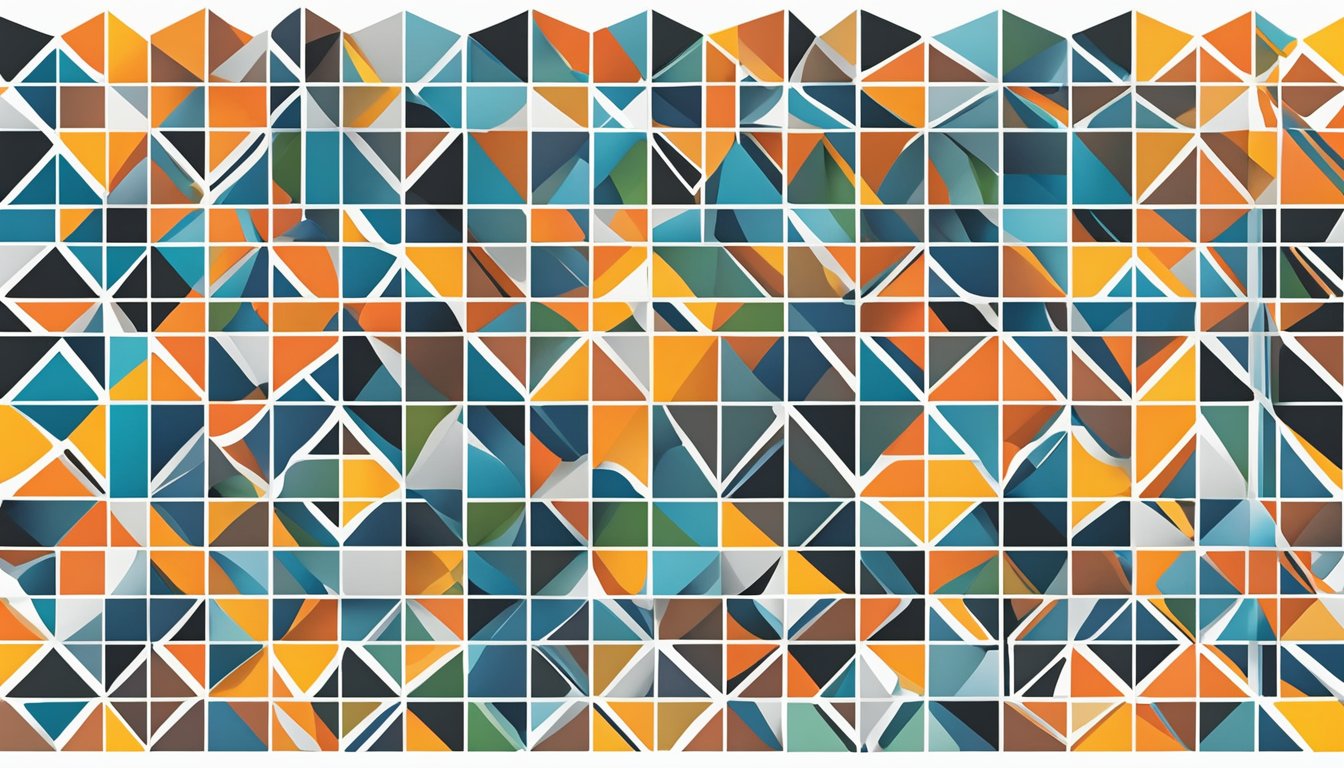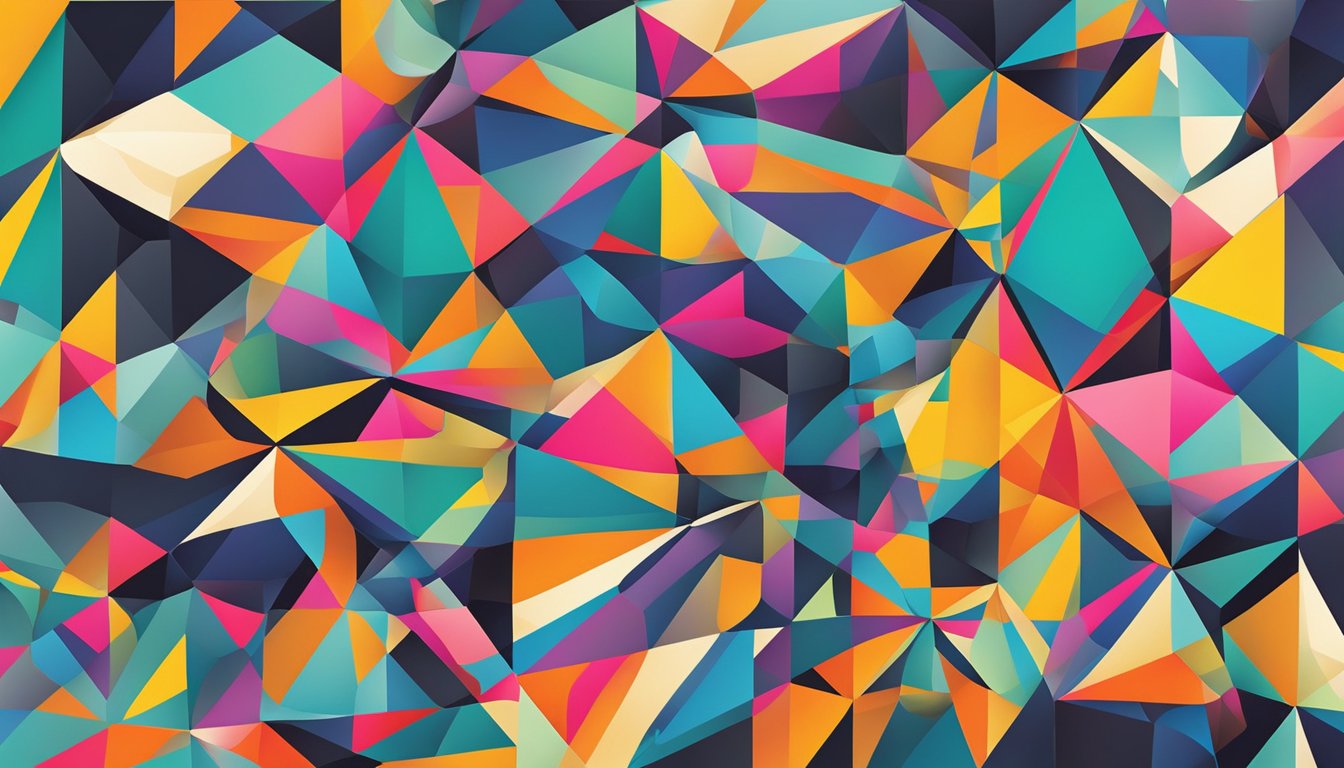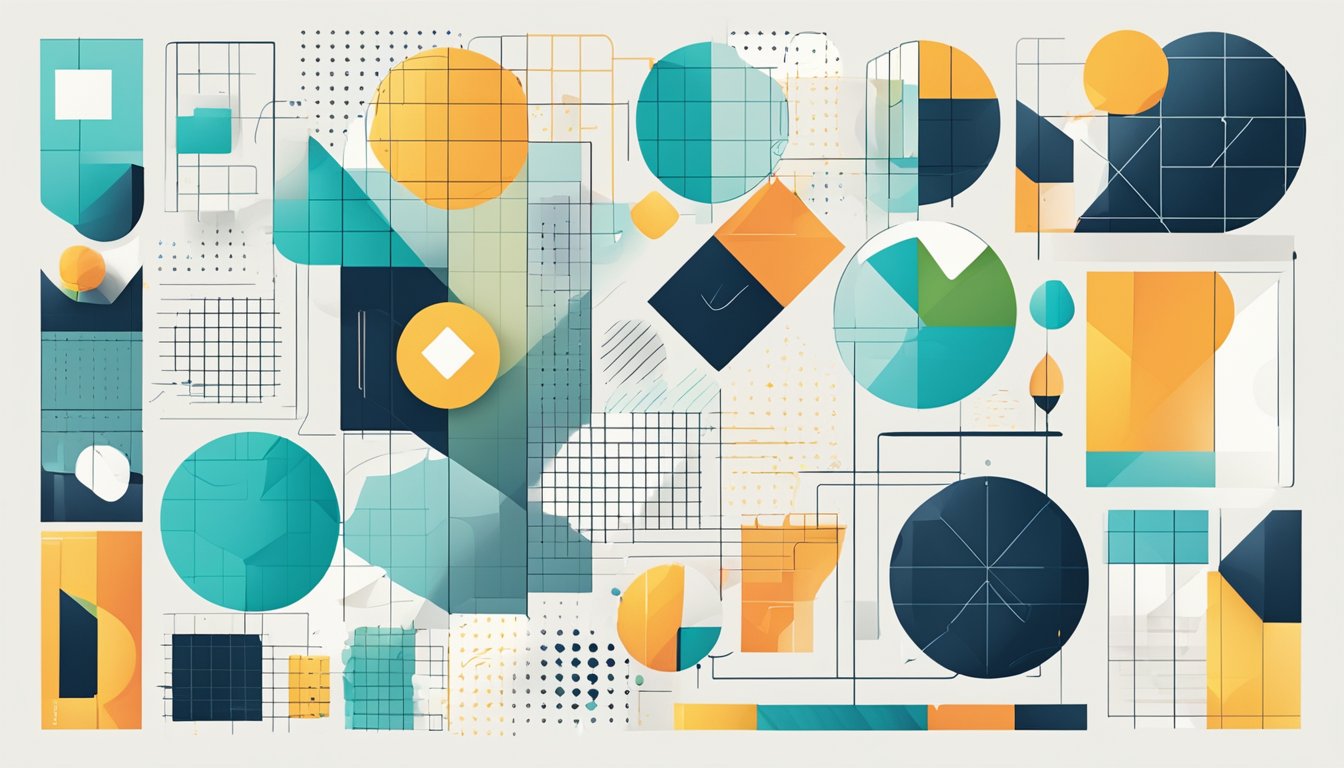Geometric art is a fascinating genre of art that has been around for centuries. It is characterized by the use of geometric shapes, lines, and space to create abstract compositions that are both aesthetically pleasing and intellectually stimulating. The foundations of geometric art can be traced back to ancient Greece, where it flourished towards the end of the Greek Dark Ages and a little later. Its center was in Athens, and from there the style spread among the trading cities of the Aegean.

Today, geometric art continues to be a popular style among artists and art enthusiasts alike. It is a genre that allows for endless creativity and experimentation, as artists can use a variety of shapes, colours, and lines to create unique compositions. Whether you are a fan of abstract art or simply appreciate the beauty of geometric shapes, there is something for everyone in this genre.
If you are interested in learning more about geometric art, this article will provide you with a comprehensive overview of the genre. We will explore its foundations, its evolution over time, and some of the most famous artists who have explored geometric abstraction. By the end of this article, you will have a better understanding of what makes geometric art so special and why it continues to captivate audiences around the world.
Key Takeaways
- Geometric art is a genre of art that uses geometric shapes, lines, and space to create abstract compositions.
- The foundations of geometric art can be traced back to ancient Greece, where it flourished towards the end of the Greek Dark Ages and a little later.
- Today, geometric art continues to be a popular style among artists and art enthusiasts alike, as it allows for endless creativity and experimentation.
Foundations of Geometric Art

Geometric art is an artistic movement that emphasizes the use of simple geometric forms, lines, and angles to create non-representational compositions. This art form emerged in the early 20th century, breaking away from traditional representational art. It invites viewers to engage with the visual language of shapes on a purely abstract level.
Historical Origins
The roots of geometric art can be traced back to ancient Greece, where geometric motifs were used extensively in vase painting during the Geometric period (c. 900-700 BC). These motifs, such as the meander, zigzag, and triangle, were used to decorate amphorae and kraters. This style of painting was characterized by its flatness, use of simple geometric forms, and nonobjective compositions.
Key Movements and Artists
Geometric art reached its peak in the early 20th century with the emergence of several artistic movements, including Cubism, De Stijl, Bauhaus, and Constructivism. Artists such as Pablo Picasso, Kazimir Malevich, Piet Mondrian, Paul Klee, Wassily Kandinsky, Theo van Doesburg, Georges Braque, and Sonia Delaunay were instrumental in the development of this style.
Principles of Design
Geometric art is based on the principles of balance, spatial relationships, and geometry. It emphasizes the use of simple geometric forms such as squares, circles, and triangles. These forms are arranged in a way that creates a sense of harmony and balance. The use of angles and motifs also plays an important role in this style of art.
Techniques and Materials
Geometric art is typically created using painting techniques such as tin and oil on canvas. The use of bold, contrasting colors is also a common feature of this style. The picture surface is often treated as a carrier for applied elements rather than a window into an illusionistic visual world.
Influence on Modern Art
Geometric art had a profound influence on modern art, particularly on the development of abstract art. It paved the way for the emergence of other styles such as Minimalism and Geometric Abstraction.
Cultural and Philosophical Context
Geometric art emerged in a cultural and philosophical context that emphasized order, rationality, and the search for universal principles. It was a response to the chaos and fragmentation of the post-Renaissance world.
Artistic Interpretation and Perception
Geometric art invites contemplation and encourages the viewer to engage with the work on an intellectual and emotional level. It challenges our preconceived notions of what art is and what it can be. By using simple geometric forms, it opens up new possibilities for creativity and expression.
If you are looking for furniture that reflects the principles of balance, spatial relationships, and geometry, Megafurniture.sg is your go-to destination. Their huge selection of modern and stylish furniture is sure to meet your needs. Shop now and experience the power of geometric design in your home.
Exploring Geometric Art Today

Geometric art has been a popular art form for centuries. Today, contemporary artists continue to explore the possibilities of geometric shapes, lines, and space in their work. In this section, we'll delve into some of the exciting developments in the world of geometric art.
Contemporary Geometric Artists
Contemporary artists are using geometric shapes and motifs to create exciting new works of art. Some notable artists in this field include François Morellet, Sol LeWitt, and Bridget Riley. These artists experiment with the use of exact shapes, colors, and spatial connections to transmit emotions, thoughts, or aesthetic.
Geometric Art in Public Spaces
Geometric art has become popular in public spaces. Large-scale geometric sculptures and installations can be seen in parks, plazas, and other public spaces around the world. These works of art add a sense of vibrancy and energy to these spaces, and they often become landmarks in their own right.
The Role of Technology in Geometric Art
Technology has played a significant role in the development of geometric art. Computer software and digital tools have made it easier for artists to experiment with shapes, angles, and perspective. This has led to the creation of new and exciting works of art that would have been impossible to create using traditional methods.
Collecting and Curating Geometric Works
Geometric art is becoming increasingly popular among collectors. Many galleries and museums now have collections of geometric art, and there are even dedicated exhibitions and shows that focus on this art form. Collectors are drawn to the balance, form, and colours of geometric art, as well as its ability to convey emotions and ideas.
Educational Impact and Resources
Geometric art has a significant educational impact. It is often used in schools to teach geometry, spatial reasoning, and other mathematical concepts. There are also many online resources and courses available that focus on geometric art and its history.
The Intersection of Art and Mathematics
Geometric art has a strong connection to mathematics. Many artists use mathematical principles and concepts in their work, and the two disciplines often intersect. This has led to the creation of new and exciting art forms that blur the lines between art and mathematics.
Geometric Art as a Tool for Expression
Geometric art is a powerful tool for expression. It allows artists to break away from established conventions and traditional depictions of reality. Geometric art often uses non-illusionistic space and cubist destruction and reformulation to create works that are abstract and full of emotion.
In conclusion, geometric art is a vibrant and exciting art form that continues to evolve and inspire. Whether you're a collector, an artist, or simply an art lover, there's something for everyone in the world of geometric art. Check out Megafurniture.sg for furniture that will complement your geometric art collection.
Frequently Asked Questions

How can one create captivating geometric art patterns?
Creating captivating geometric art patterns requires a keen eye for detail and a deep understanding of geometric shapes and their combinations. To create captivating geometric art patterns, you need to experiment with different shapes, sizes, and colours. You can also use lines and angles to create intricate patterns. You can draw inspiration from nature, architecture, and other art forms. With practice and experimentation, you can create beautiful and captivating geometric art patterns.
What techniques make geometric art easy for beginners to master?
Geometric art is relatively easy for beginners to master. The key is to start with simple shapes and patterns and gradually work your way up to more complex designs. You can use a ruler, compass, and protractor to create precise shapes and angles. You can also experiment with different colours and textures to create depth and dimension. With practice and patience, you can master the techniques of geometric art.
Who are some of the most renowned artists in the realm of geometric art?
There are many renowned artists in the realm of geometric art. Some of the most famous include Kazimir Malevich, Piet Mondrian, Wassily Kandinsky, and Frank Stella. These artists have made significant contributions to the development of geometric art and have inspired countless artists around the world.
Could you suggest some exemplary pieces of geometric art that have made a significant impact?
Some exemplary pieces of geometric art that have made a significant impact include Kazimir Malevich's "Black Square," Piet Mondrian's "Composition II in Red, Blue, and Yellow," and Wassily Kandinsky's "Composition VIII." These works are considered masterpieces of geometric art and have influenced generations of artists.
In what ways can geometric shapes be incorporated to depict animals artistically?
Geometric shapes can be incorporated to depict animals artistically in many ways. For example, you can use triangles to create the ears of a cat or the beak of a bird. You can use circles to create the eyes of an owl or the spots on a leopard. You can also use squares and rectangles to create the body and limbs of an animal. By combining different shapes and colours, you can create unique and captivating depictions of animals.
What are the distinguishing characteristics of the geometric art style?
The distinguishing characteristics of the geometric art style are its use of simple geometric shapes, such as squares, circles, and triangles, and its emphasis on abstraction and non-representation. Geometric art often features bold colours, sharp lines, and precise angles. It is characterized by its simplicity, clarity, and mathematical precision. Geometric art is a highly stylized form of art that emphasizes form over content and has had a significant impact on modern art and design.



